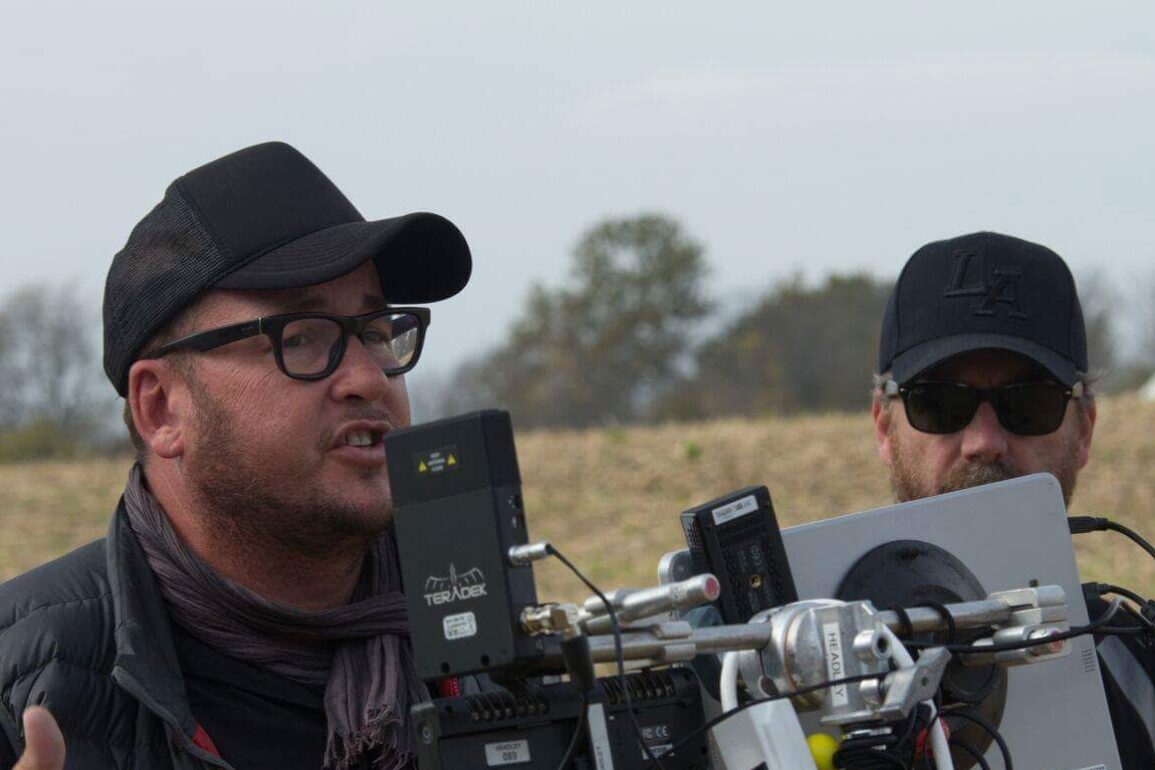Genre filmmaker Nick Lyon has established himself as a stalwart steward in the world of action with pictures like Bullet (2014), Zombie Apocalypse (2011), Rise of the Zombies (2012), as well as in the world of sci-fi and horror with features such as Species: The Awakening (2007), Grendel (2007), and Titanic 666 (2022), and now he’s about to unveil his most intense and epic film yet with On Fire, which is receiving a semi-wide theatrical release on September 29th from Cineverse. On Fire stars Peter Facinelli as a father desperately trying to save his trapped family from a wildfire, and the film has an effective amount of tension and thrills as it follows Facinelli’s character’s family as they navigate the devastating effects of the catastrophe, almost in real-time.
Here, Lyon discusses his work on the picture.
The biggest question is that the star Peter Facinelli is credited as a co-director on the film, but it also says “A film by Nick Lyon.” How did Peter Facinelli become the co-director?
So during the shoot, I tested positive for Covid, and I asked Peter to fill in for me as director on the days I could not be on set. We really had no money or time to pause production with Thanksgiving just days away. Peter stepped up admirably for the final days of filming to ensure the project’s completion as I could not be on set and was stuck in the hotel room staring at my shotlists. When a film is chugging along and has momentum, everyone is in their groove so it almost runs on automatic at some point. The ingredients are all there, the baking has been done and the dish needs to finish cooking and be put on a plate and served. The entire shoot, Peter and I were on the same page as far as how we envisioned the film, so I completely trusted he would do a great job. We were butting up against Thanksgiving break and there was no way to push the shoot even a few days, so he stepped in and ensured the completion of principal photography. He did a great job doing so. Peter and I were always bouncing ideas off of each other to help make the film better, and as the lead actor, he is very in tune with the character and story.
The collaboration between Peter and myself continued into and through the post-production. We were already so intertwined as co-producers and with him as the lead actor and stepping in while I was sick, so I felt like I wanted to share the directing credit. I don’t like to take credit for things I don’t do, and I like to give credit where credit is due, so I offered Peter a Co-directing credit as a thanks for stepping in and to show my appreciation.
I also have to express my gratitude to our dedicated team, and want to extend special thanks to Nicholas Ryan, our first assistant director, for his crucial role in keeping things on track. Our Director of Photography, Phillip Roy, contributed immensely to the film’s visual brilliance. And let’s not forget Peter Winther, who assisted Peter in taking over directorial duties during my short absence. Their collective efforts and dedication helped ensure the success and completion of our project.
Nick, talk a little bit about the origin of the script for On Fire. What was it about the subject matter that interested you?
In 2017, while camping with my sons, I had a moment that sent my imagination racing. I couldn’t help but wonder what we’d do if a wildfire broke out during our trip. That very moment ignited the spark for a film concept that I couldn’t shake.
So I started crafting various story treatments, I began to feel confident in my ability to bring this vision to life. You see, I had worked on numerous films that heavily relied on visual effects and practical effects like wind and fire. Drawing from this experience, I believed I had the expertise to make a forest fire scenario work within a lower-budget framework.
My background in action and disaster films, some with elements of sci-fi, had taught me the art of creating intense and realistic disaster sequences. I knew how to blend visual effects seamlessly with practical effects to make the audience feel fully immersed in the chaos of a forest fire. This combination of skills made me believe that I could realistically depict a family’s harrowing experience in the midst of such a natural disaster.
This project was a marriage of my storytelling passion and accumulated experience in disaster films, all coming together to create a cinematic experience that showcases the power of nature and the indomitable human spirit. It was a challenging endeavor, but one that I felt uniquely equipped to tackle, thanks to my extensive background in visual and practical effects.
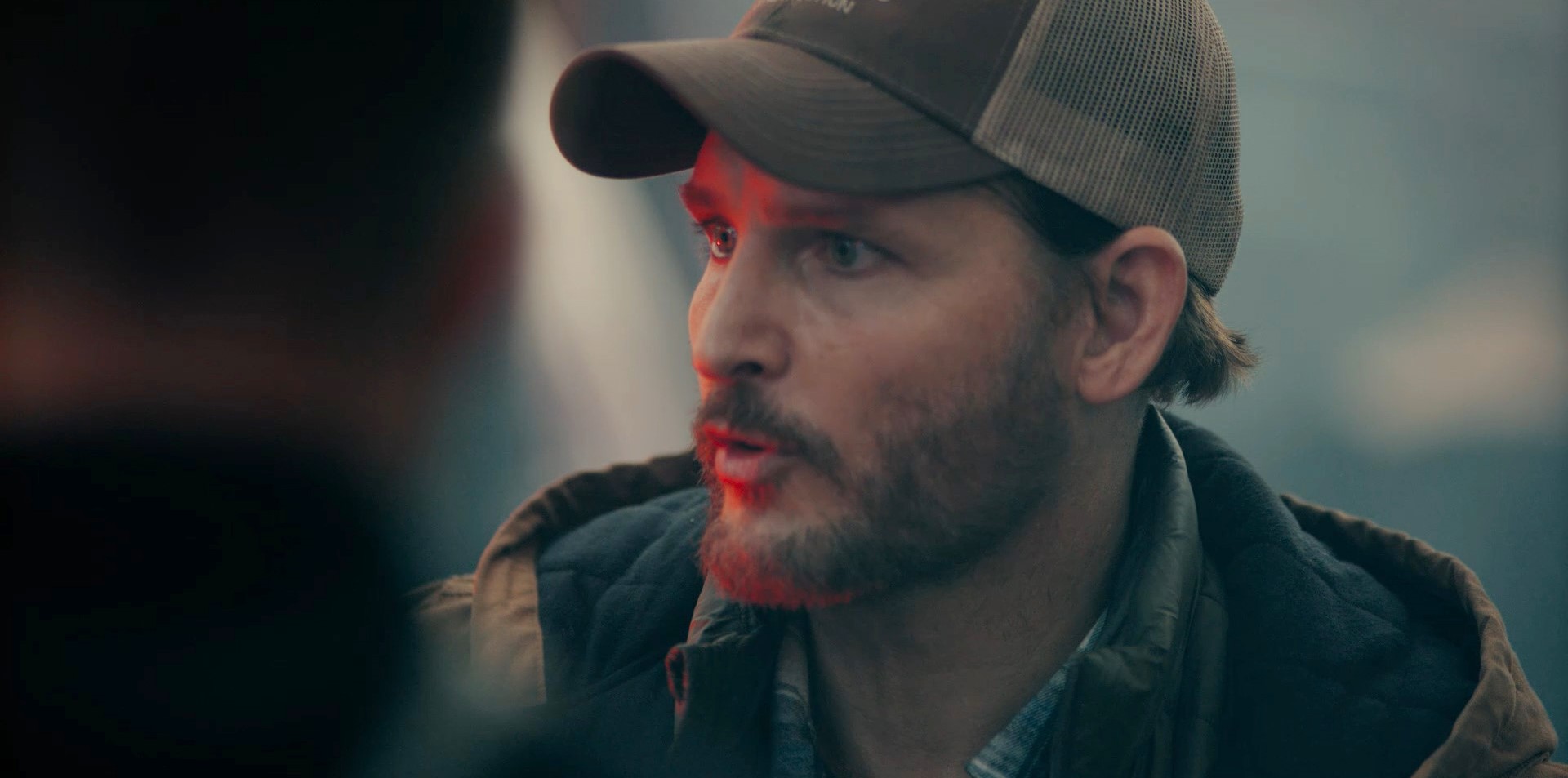
I can think of other films that deal with similar issues in an action film type setting like Firestorm and Those Who Wish Me Dead, but On Fire is really paired down from a dramatic sense and focuses on a family just trying to survive. What sort of research did you and your screenwriter Ron Peer do to get inspired? It’s eerie and strangely prescient right now with the current disasters ravaging our country at the moment.
Over the past decade, I’ve been deeply impacted by the escalating occurrence of wildfires. This concerning trend has unfolded before my eyes, and as a filmmaker, I’ve come to view it as my moral duty to contribute to the conversation about these disasters through storytelling.
One aspect that has particularly motivated me is the absence of independent films with smaller budgets that delve into the harrowing realm of forest fires. The majority of existing fire-related films are backed by substantial budgets and extended production timelines. It’s in this specific niche that I have found my forte, as I’ve honed my ability to create cinematic experiences that rival their big-budget counterparts while working within more constrained financial parameters.
A prime example of a forest fire film that deeply resonated with me is “Only the Brave.” This true story-based film added a layer of authenticity that heightened its impact. The portrayal of the fire scenes, in particular, was nothing short of awe-inspiring, evoking a profound sense of realism.
With this in mind, I have made it my mission to craft a film that not only entertains but also raises awareness about the grave realities of forest fires. By employing my expertise in budget-conscious filmmaking, I aim to create an immersive and impactful cinematic experience that resonates with audiences and underscores the urgent need for understanding and action in the face of these increasingly prevalent natural disasters.
My personal connection with people who lost their homes in the Malibu fires emphasized the importance of this project. Even from my vantage point in West Hollywood, I could see the devastating impact of these wildfires. Growing up along the West Coast, from Idaho to California, I was familiar with the constant threat of forest fires, which turned our skies orange and caused traffic gridlocks every year.
To gain a deeper understanding, I immersed myself in survivor stories through books and YouTube accounts. These firsthand accounts provided a raw look at the trauma and resilience of those affected by such catastrophic events.
Conversations with survivors and firefighters from the Bastrop fires added valuable insights. Their experiences shed light on the complexities of evacuations, which were remarkably consistent in family accounts. What struck me most was the immediate loss of electricity, serving as a chilling confirmation that the situation was dire.
Additionally, we wanted to highlight the role of the first responders who often found themselves in a position of limited assistance and had to bear witness to the disaster from the other end of a phone line. This aspect was deeply distressing, so it became crucial to depict a responder who could provide help and support amidst the chaos. It was essential to showcase the emotional toll this role takes, alongside the challenges of being a source of aid when the situation appears overwhelmingly grim.
This extensive research approach has enriched the project with profound knowledge and empathy, enabling us to authentically portray the intensity and emotional impact of a forest fire from a family’s perspective while also shining a light on the unsung heroes who face their own battles in the midst of disaster.
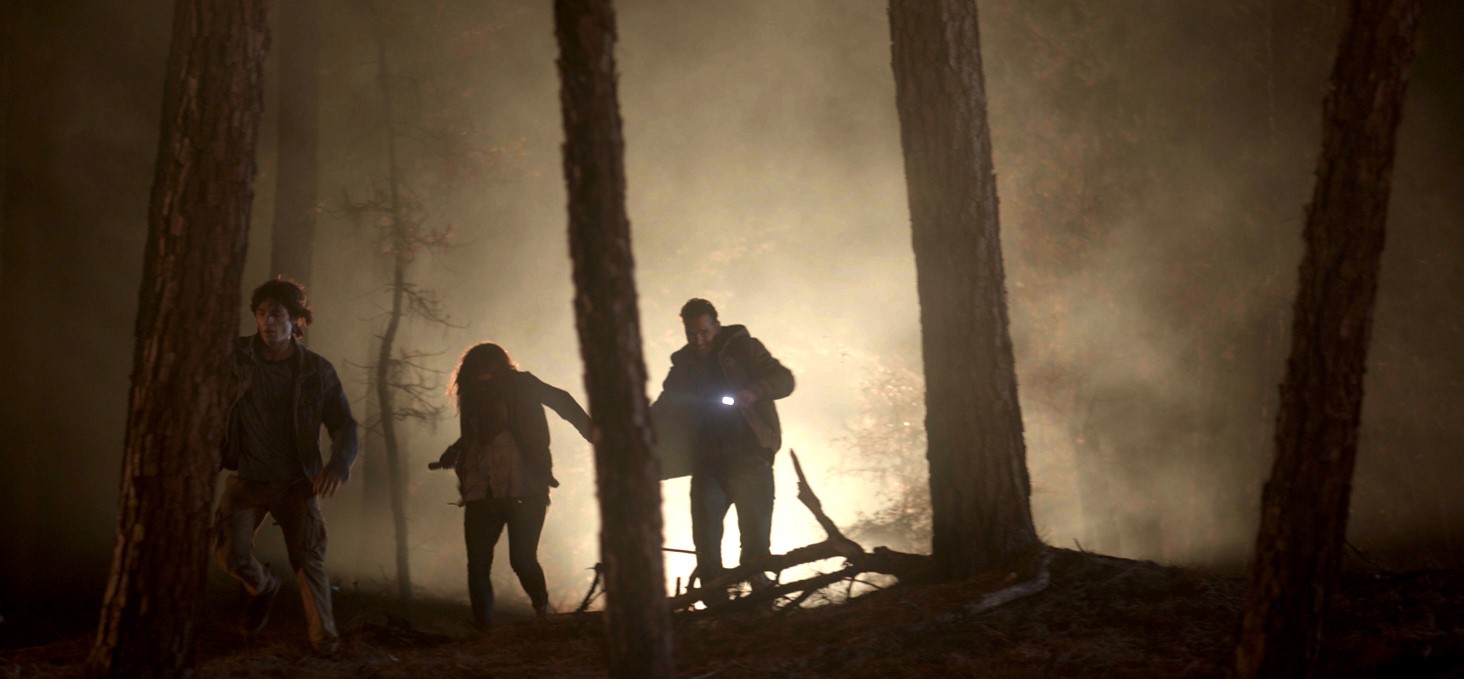
Talk about the casting of the film and working with your actors.
We were incredibly fortunate to assemble a truly exceptional cast, all thanks to the remarkable efforts of our casting directors, Tinika Becker and Paul Weber. They orchestrated interviews with several outstanding actors, including Peter Facinelli, Fiona Dourif, and Asher Angel, who each brought their unwavering dedication and professionalism to the project.
Fiona Dourif’s performance was truly remarkable. Her ability to completely immerse herself in the character without any self-consciousness or ego was awe-inspiring. It’s fascinating to note that she’s never watched herself on screen, a choice that seems to empower her to follow her instincts wholeheartedly. This authenticity she brought to her role as Sarah injected a profound sense of humanity and realism into the film, portraying a hard-working pregnant woman who couldn’t afford maternity leave.
Asher Angel’s talent and humility left a lasting impression. His capacity to envision and translate visual effects into tangible reality was astonishing. I have every confidence that he is destined for greatness in the acting world, and it was a privilege to collaborate with him on this project.
In addition to these remarkable talents, we were fortunate to have esteemed veteran actors like Peter Facinelli and Lance Henriksen. Their portrayal of a father-son relationship was truly moving, and I couldn’t have asked for a better match. Lance, a true legend in his own right, was a dream come true to work with. His portrayal of George was nothing short of heart-wrenching, capturing the essence of a man who had lost his wife and was embracing the inevitability of his own journey’s end.
Peter Facinelli, who not only embodied the character of Dave Laughlin but also played an integral role as a producer, went above and beyond to understand and realize my vision for the film. Our synergy was palpable from the start, and Peter seamlessly stepped into the role both in front of and behind the camera as well. I am immensely grateful to him for taking the reins as co-director during the last days of filming after I was diagnosed with Covid.
The dedication, professionalism, and exceptional talent of our cast elevated the project beyond our expectations. It was truly an honor to collaborate with such outstanding individuals, and their contributions undoubtedly enriched the depth and authenticity of the film.
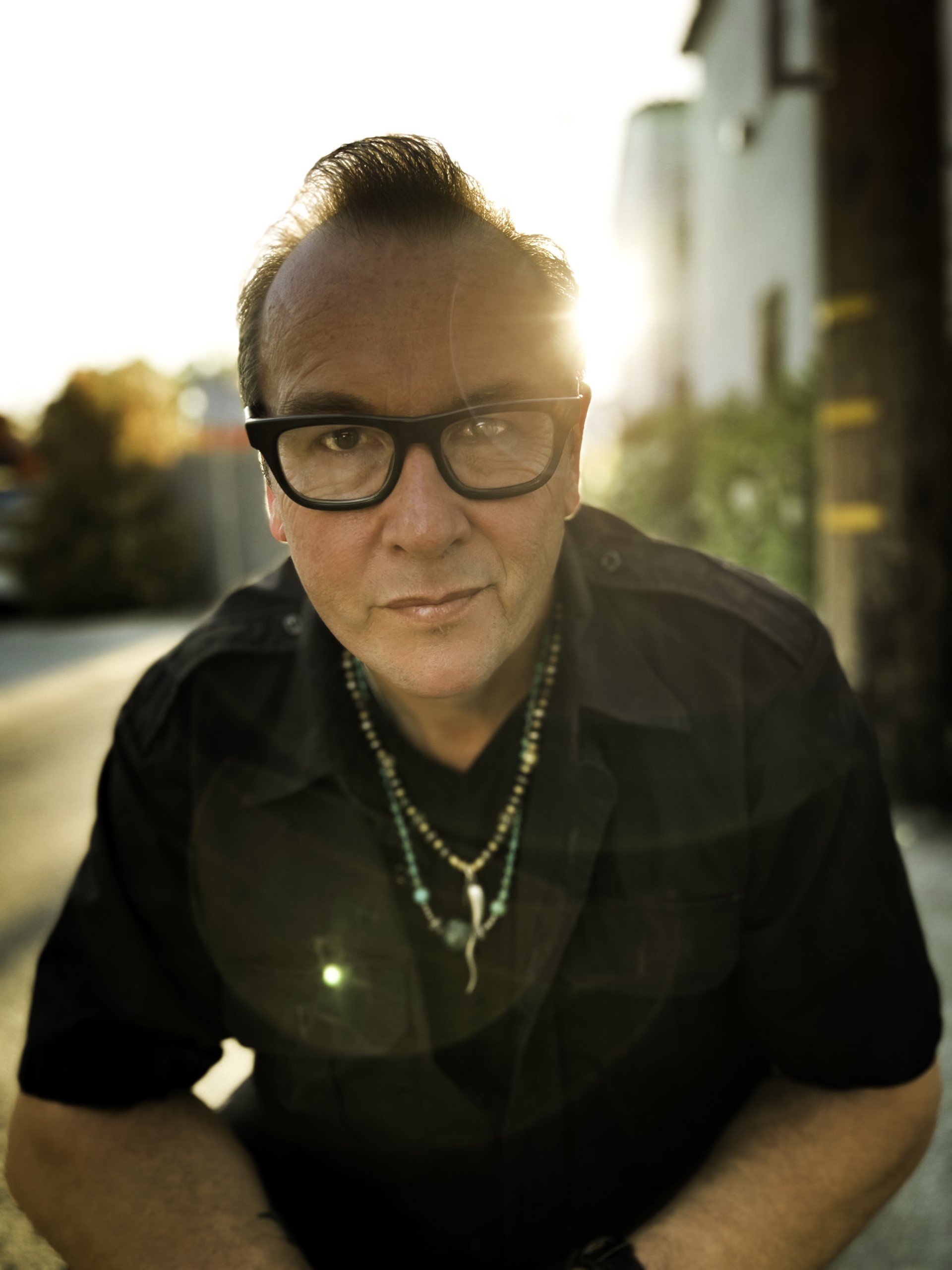
What were some of your most memorable days on set with each actor and how your previous experience in your career helped prepare you to work with this particular cast and crew.
Navigating the pressures of an effects-driven film is an immense challenge, and my past experiences have been instrumental in preparing me for this endeavor. Having previously helmed projects with larger casts and often working alongside entirely new crews, I understand the complexities of collaborating with unfamiliar team members. It’s a reality that not everyone perceives colors like blue or yellow in the same way, and as a director, these disparities become readily apparent on set, so knowing how to navigate this with professionalism is really important.
Throughout this journey, there have been countless memorable moments that have left an indelible mark. One standout experience was working with Ashlei Foushee, who portrayed the young 911 operator. Her embodiment of the character exceeded my expectations, and we shared an exhilarating synergy on set. We both felt a sense of freedom and security, which allowed for spontaneous improvisation. When I asked her to convey emotions through her directions, she delivered a truly remarkable performance that left us all in awe.
Collaborating with the legendary Lance Henriksen was another cherished highlight. In a scene alongside Peter Facinelli, Lance’s ability to evoke genuine emotions that moved the entire crew to tears was awe-inspiring. He followed direction meticulously and fearlessly immersed himself in the scenes, reaffirming his status as a true legend.
I also treasure the moments shared with Peter Facinelli and Fiona Dourif. Fiona’s portrayal of a worried mother and wife, deeply concerned for her family, was profoundly moving. I have an affinity for poignant, emotionally charged dramatic moments, and her performance exceeded my expectations.
One particularly powerful scene involved the family witnessing a neighbor engulfed in flames, desperately pleading for help. In this moment, Asher Angel’s raw intensity and defiance, culminating in a gut-wrenching scream directed at the raging fire, were truly captivating. His father’s protective embrace added a layer of poignant authenticity to the scene.
These are just a few examples of the many remarkable moments that stand out in my memory. The dedication and skill of the actors were instrumental in bringing this project to life, and I am deeply grateful for their contributions. Their commitment to their craft enriched the film and made this endeavor an unforgettable experience.
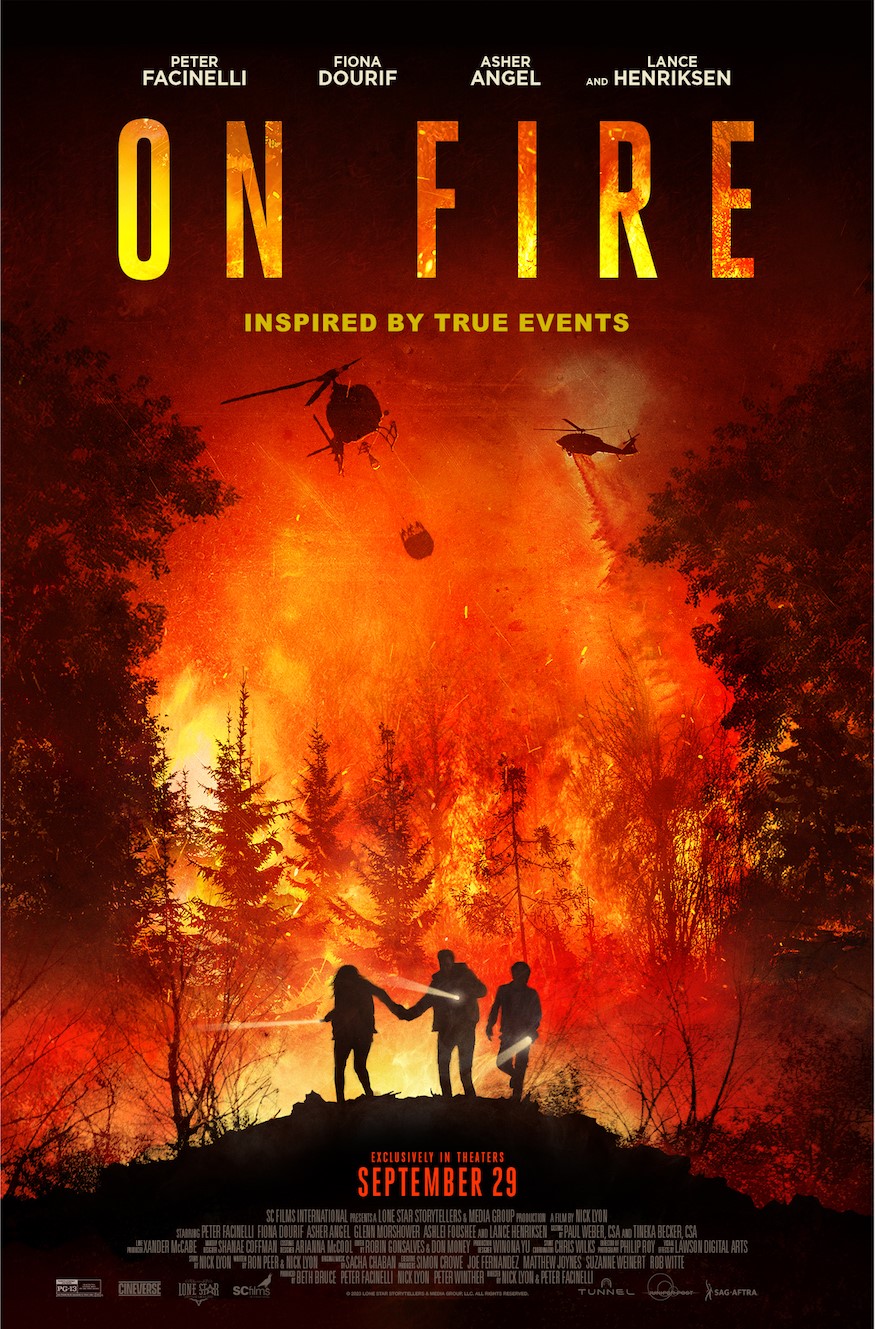
On Fire has some tricky special effects. Discuss using practical effects and digital effects for this film and how challenging it was to meld the two.
The success of “On Fire” hinged on the collaborative efforts of three remarkable individuals, Chris Wilks and Joseph Lawson, and my editor Don Money whose invaluable contributions in their respective domains were internal in successfully pulling off the vision I had at a low budget.
In my career, I’ve been involved in numerous films that required a delicate balance of practical effects, visual effects, and makeup effects. With this experience as my foundation, I embarked on the mission to design a comprehensive game plan for “On Fire.” The goal was to convincingly convey that the family was entrenched in the midst of a raging forest fire. However, this had to be achieved safely and efficiently, given our budget constraints. Using real fire was logistically and financially impractical due to the inherent dangers and expenses involved.
Enter Joseph Lawson, a visual effects maestro with whom I had collaborated on multiple films. Joseph’s expertise in low-budget visual effects was instrumental in bringing our vision to life. He crafted nearly 500 visual effects, seamlessly enhancing the authenticity of the fire scenes. His contribution was pivotal in elevating the film’s overall impact.
Another part of the fire equation was Chris Wilks, our special effects supervisor and stunt coordinator. Initially, we had planned to incorporate more practical fire effects, but an unexpected revelation during filming changed our approach. Beneath the trees where we were shooting, we discovered a layer of pine needles and wood-based soil, making the use of practical fire far too risky. Chris, provided the perfect solution. He employed fire gel and fire bars strategically in front of the cameras, ensuring the safety of our crew and cast while maintaining the illusion of fire through hundreds of yards of smoke fed through tubes. His dual expertise in stunts and special effects added an extra layer of security, especially in scenes involving individuals on fire and high-impact vehicle crashes.
And knowing how to edit such effects driven films is of utmost importance, and Don Money does just that in the edit suite. He understands the elements as well as how the visual effects will enhance the images. This is a skill not all editors have.
One innovative aspect of our approach was the utilization of new LED lights equipped with built-in fire effects. This cutting-edge technology allowed our DOP Phillip Roy to capture footage that already had the appearance of being engulfed in flames. This ingenious method simplified the process of adding flames to the base of smoke and fire, rather than attempting to create it entirely as a visual effects element.
In essence, Chris Wilks, Joseph Lawson, Don Money and our DOP Phillip Roy were the linchpins of our project, providing the safety, creativity, and expertise needed to convincingly bring a forest fire to life on screen. Without their unwavering dedication and proficiency, the realization of “On Fire” would have been an insurmountable challenge.
Peter Facinelli is credited as a co-director on the film, but it also says “A film by Nick Lyon.” Talk a little bit about what happened here, if you’re comfortable with discussing that.
I’d like to express my gratitude to our dedicated team, especially Peter, who wore multiple hats as an actor and producer. When I tested positive for COVID-19 and couldn’t be on set for the final days of filming, Peter stepped up admirably to ensure the project’s completion. We were on the same page as far as how we envisioned the film, so I completely trusted he would do a great job. We were butting up against Thanksgiving and there was no way to push the shoot, so he ensured the completion of principle photography and did a great job doing so.
I also want to extend special thanks to Nicholas Ryan, our first assistant director, for his crucial role in keeping things on track. Our Director of Photography, Phillip Roy, contributed immensely to the film’s visual brilliance. And let’s not forget Peter Winther, who assisted Peter in taking over directorial duties during my absence. Their collective efforts and dedication ensured the success of our project.
The film runs a brisk 80 minutes. Was anything left out that you wanted put in?
As a director, the process often entails making tough decisions, even if it means letting go of elements you hold dear. In the case of “On Fire,” I initially delivered a director’s cut that ran approximately 87 minutes in length. My editor, Don Money, and I meticulously worked on various versions of the film, ranging from 113 minutes to 87 minutes. Each version had its variations, making it a rich and dynamic creative journey.
It’s a well-known truth in filmmaking that there will always be moments and scenes that you cherish as a director. However, it’s equally important to become accustomed to making difficult choices and, as they say, “killing your babies” when necessary. In the editing room, you might develop a deep attachment to a particular scene or shot, to the extent that you shape the entire film around it. Yet, there are instances when this attachment can impede the film’s overall flow and impact. In such cases, you must allow the larger vision to prevail.
In the editing phase of a film, it usually includes an editor’s cut, a director’s cut and a producer’s cut. In the case of the producer’s cut of On Fire, approximately six minutes were removed, mainly focusing on Kayla, the novice 911 operator struggling to grapple with the terror of a forest fire and her inability to physically assist people. Her scenes, including a powerful breakdown in the bathroom, showcased her incredible talent, and I do miss those moments. However, this is where the beauty of collaboration comes into play. Different perspectives often reveal new insights, and in the producer’s cut, and Peter was felt that Kayla’s performance, though outstanding, drew attention away from the core family narrative.
I firmly believe that a film should never overstay its welcome. If that means a runtime of 80 minutes, so be it, as I’d rather have an engaged audience than risk boredom. Maintaining tension throughout the film was a priority for me, and I believe we achieved that goal. In the realm of filmmaking, there’s no room for ego. Over the course of numerous productions, I’ve learned to embrace collaboration as an asset rather than a threat. If a good idea emerges, I welcome it, recognizing that it can ultimately contribute to the quality of the film. In my earlier days as a director, I might have perceived such input as a threat, but now I understand that it’s an integral part of the creative process that can elevate the final product.
Talk about Cineverse and how they’re handling distribution for the film. I’ve been seeing posters for the movie every time I’ve gone to the movies for the last few weeks. That seems to be a good sign.
I’m incredibly proud to have several films distributed by Cinedigm, and “On Fire” marks a significant milestone as one of the first films under the new Cineverse banner. The fact that they’ve chosen to release it in over 700 theaters is an immense honor, and it speaks to their belief in the film’s message.
What makes this achievement even more remarkable for me is the context in which “On Fire” was created. We embarked on this film without a distribution deal in place, a courageous endeavor for any independent film financier, and Beth Bruce, Rob Witte and Joe Fernandez of Lonestar Storytellers and Media Group were up to it. This achievement is a testament to the passion and dedication of everyone involved in the project.
It’s a rare occurrence for a small indie film to receive such a wide theatrical release, particularly in today’s ever-evolving cinematic landscape. I believe that the timeliness of the film’s subject matter played a crucial role in this decision. The urgency of addressing the escalating threat of forest fires, exacerbated by the alarming effects of global warming, cannot be overstated.
Through “On Fire,” we aim to bring awareness to the pressing issue of climate change and its devastating consequences, particularly in the form of increasingly destructive forest fires. These natural disasters have intensified year after year, posing a grave threat to our environment and communities. The film serves as a call to action, urging us all to take meaningful steps to combat global warming and protect our world from the relentless fury of these fires.
You’ve built up quite an impressive filmography as a director. What are some of your most under looked films? Action seems to be your forte. Do you have a favorite film that you’ve made?
In my journey through the world of filmmaking, I’ve been privileged to work on a wide array of projects, and some of the most significant honors have come when I’ve had the opportunity to produce, write, and direct films. These endeavors become intensely personal for me, weaving together my creative vision with the dedication of an incredible team.
Among these deeply personal projects are films like “Punk Love,” “Bullet,” and the latest addition to this list, “On Fire.” These films allowed me to pour my heart and soul into every aspect of the production, from crafting the story to bringing it to life on screen. It’s a level of creative involvement that is both fulfilling and challenging, pushing me to explore new horizons and reach for greater heights in storytelling.
As a filmmaker, it’s an exquisite challenge to select favorites among the plethora of experiences I’ve had. Each project possesses its own allure, and what truly captivates me is the journey itself—the exhilarating process of creation.
Reflecting on my cinematic voyage, I can’t help but think back to the early days of “I Love You Baby,” my maiden foray into feature filmmaking. This Mediterranean gem, set against the breathtaking backdrop of Mallorca and graced by the legendary Maximilian Schell, provided the canvas for my artistic vision to take shape. It was a venture that left an indelible mark on my creative soul, marking the beginning of a remarkable odyssey.
Then there’s “The Boy The Dog and the Clown,” a heartwarming endeavor that transcended filmmaking—it became a family affair. In this project, dear friends and loved ones united to craft a unique kind of magic. It was a journey where we wore multiple hats, from shooting to sound, producing to writing, and the result was a profound testament to the power of collaboration.
Among the standout adventures is “Species: The Awakening,” an exploration of the vibrant tapestry of Mexico City, and “Hercules Reborn,” an odyssey through the exotic landscapes of Morocco. And not to be forgotten is “Bermuda Triangle North Sea,” a 43-day epic that took us on a captivating journey across Germany. Each experience, distinct and immersive, brought its own set of challenges and rewards, and I hold them all close to my heart.
In the world of filmmaking, where creativity knows no bounds, it’s the fusion of diverse experiences that enriches our storytelling. Each project is a unique chapter in the grand narrative of my cinematic journey, and I treasure them all for the rich tapestry they’ve woven into my creative life.
Will On Fire appeal to an action movie crowd, or a drama crowd, or do you think it fits right in the middle?
With the escalating frequency of wildfires across the globe, “On Fire” addresses a profoundly current and urgent subject matter that should inspire and resonate with people from all walks of life. At its core, the film is a survival drama, with the forest fire itself serving as the antagonist, relentlessly pursuing the family as they fight for their lives. The drama is undeniably compelling because it’s rooted in reality, highlighting the genuine stakes faced by countless individuals. This isn’t just cinematic action; it’s a stark reflection of real-life events that can and do happen to ordinary people. That’s what makes it so gripping and relatable.
In terms of theatrical releases, my films have often taken a more independent route, but there’s an undeniable magic that happens when a movie graces the big screen. “Bullet” with Danny Trejo, which I recall seeing in a theater at the AFM, is a perfect example. The larger-than-life visuals and immersive experience of a theatrical screening add an extra layer of depth and impact to the storytelling. It’s an opportunity for audiences to be fully immersed in the world of the film, to feel the heat of the flames, the rush of the chase, and the emotional depth of the characters.
“On Fire” was intentionally shot in a more naturalistic style, embracing wider shots to capture the vast scope of forest fires and the beauty of the surrounding wilderness. These visuals translate beautifully to the big screen, allowing viewers to fully appreciate the immersive experience of the film.
However, even if circumstances don’t permit a theatrical viewing, “On Fire” should hold its own regardless of where it’s watched. The heart-pounding drama, the realistic stakes, and the universal theme of survival make it a gripping and unforgettable cinematic journey that transcends the confines of the theater. Whether on a big screen or at home, the power of the narrative remains undiminished, and I believe audiences will be deeply moved by the film’s message and storytelling.
Is there a particular story you’re really excited to tell in a movie that you haven’t been able to yet? If so, say something about that.
In my creative journey, I find myself constantly surrounded by a multitude of stories, both on paper and in my mind’s eye, waiting to be unveiled. At any given moment, I’m immersed in the development of numerous movie and television series treatments, each offering a unique and captivating narrative. Looking ahead to the future, one of my most ambitious and exciting projects on the horizon is “THE VESSEL.” This compelling endeavor is slated to take shape in 2024, and I’m eagerly anticipating the opportunity to bring to life.
I’m an energetic and creative individual with a passion for storytelling and a reservoir of untold narratives waiting to be brought to life. Over the years, I’ve penned around 20 screenplays, each a unique world of its own, many yearning to find its place in the spotlight. While my creative mind never truly rests, I’ve learned to focus my energies on a select few projects at a time, ensuring that each story receives the attention and care it deserves.
One of the stories that should one day be brought to the big screen and holds a special place in my heart—the remarkable story of my grandfather’s experiences in World War II. His survival against all odds in the South Pacific is a testament to the resilience of the human spirit. Shot in the neck and left for dead among a pile of casualties, his indomitable will to live defied the odds. Crawling out from the midst of the fallen, he embarked on a miraculous journey that took him from the battlefield to a hospital bed in New Zealand.
After half a year of recovery, he made his triumphant return home, only to face a surreal twist of fate. His reappearance in Pocatello, Idaho, after being declared dead, left his own father in disbelief. The shock was so profound that his father, upon seeing him, fainted, believing he had encountered a ghost. It’s a story that I would one day love to bring to the screen, to share with the world, and to honor the memory of my grandfather.
As I continue to develop and nurture new stories, I look forward to a future filled with vibrant, captivating narratives that captivate audiences and inspire them as profoundly as this remarkable tale has inspired me. The creative journey is boundless, and I can’t wait to see where it takes me next.
Please Visit: https://www.onfiremovie.com/
Also, please visit: https://www.nicklyon.com/
Watch the Trailer:




